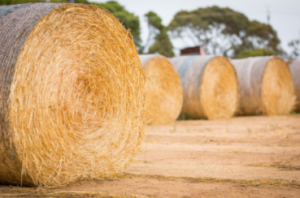You’ve probably seen a bale wrapped with bird and rodent repellent film. But what is the best bale wrap for your needs? Here’s a look. Read on to find out the pros and cons of bale wrap before making your final decision. And don’t forget to test it for durability! Aside from its bird and rodent repellent properties, bale wrap can also reduce storage costs and help maintain feed quality.
 The best bale wrap is the one that you can move between bales at one time. In-line bale wrappers can move multiple bales simultaneously and be more efficient than single-person wrappers. However, they are more expensive than individual wrappers, so you should research and decide if you need a custom operator. If you’re starting, custom wrapping might be an option to justify the cost of a wrapper.
The best bale wrap is the one that you can move between bales at one time. In-line bale wrappers can move multiple bales simultaneously and be more efficient than single-person wrappers. However, they are more expensive than individual wrappers, so you should research and decide if you need a custom operator. If you’re starting, custom wrapping might be an option to justify the cost of a wrapper.
The first step in creating an edible bale wrap is to test its safety. First of all, it must be resistant to moisture and rodents. If it is too moist, it’s best to wrap the bale in the net first. Then, wrap it with plastic. It should also keep out sunlight and moisture. Plastic film is not completely impermeable to oxygen, so it should be as thick as possible. Using plastic film, use eight layers, while six layers are better.
An in-line bale wrap is best for high-volume producers. It takes a single bale and wraps it in several layers of cling-wrap plastic film. This type of bale wrapper eliminates the need for an extra hand while wrapping. Plus, it saves on plastic wrap costs. So, it’s a good choice for anyone who wants to save money! Check out our video to learn more about the advantages of bale wrappers.
The best bale wrap will be made from high-quality silage stretch film. It will preserve the nutritional value of fodder while minimising waste. Its multi-layer design allows for greater performance. Despite the benefits, bale wraps require relatively low maintenance once they’re finished. The benefits of using this bale wrap are clear:
Cross Wrap plain bale wrappers eliminate bale wires, simplifying bale structure and increasing workplace safety. CW 2200 bale wrapper has the lowest operating cost and the highest production rate among comparable machines. In addition, its belt conveyors reduce bale breakage. They also reduce the amount of litter created when bales are wrapped. As a result, it makes Cross Wrap the bale wrapper of choice for many producers. And it’s also compatible with most baler brands.
Silacord bale wrap features a seven-layer structure that provides excellent mechanical resistance. The wrap can wrap any bale, including straw. And it works well with all types of wrapping machines. The unique structure allows for an extended lifespan and a lower carbon footprint. It’s perfect for bale wrappers, high-speed or slow. And it doesn’t have to be cut. But it can be a bit more difficult to wrap bigger bales.
Another option is a John Deere B-Wrap. This wrap, which is additional to the baler, is made of multiple layers. It costs $5 to seven dollars per bale. It may result in similar losses as shelter. A silage wrap contains microscopic pores that shed water and prevent ground moisture from seeping into the bale. If you’re not happy with the cost of silage wraps, you can buy the John Deere B-Wrap.
If you have trouble keeping the animals out of the bale wrap, consider using an edible wrap. Some researchers have found that a bale wrap can impede animal digestion, leading to weight loss or death. But they haven’t tested this wrap in the field yet. In the meantime, they’re experimenting on how it will hold up. If this wrap is effective, it can be used in existing machinery. Just remember to keep your comments civil and on topic.
